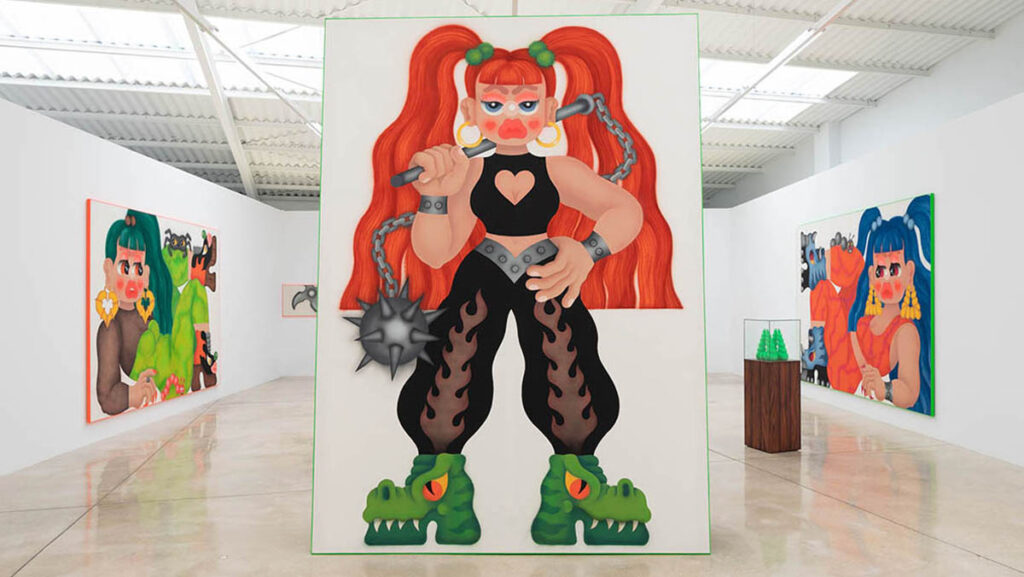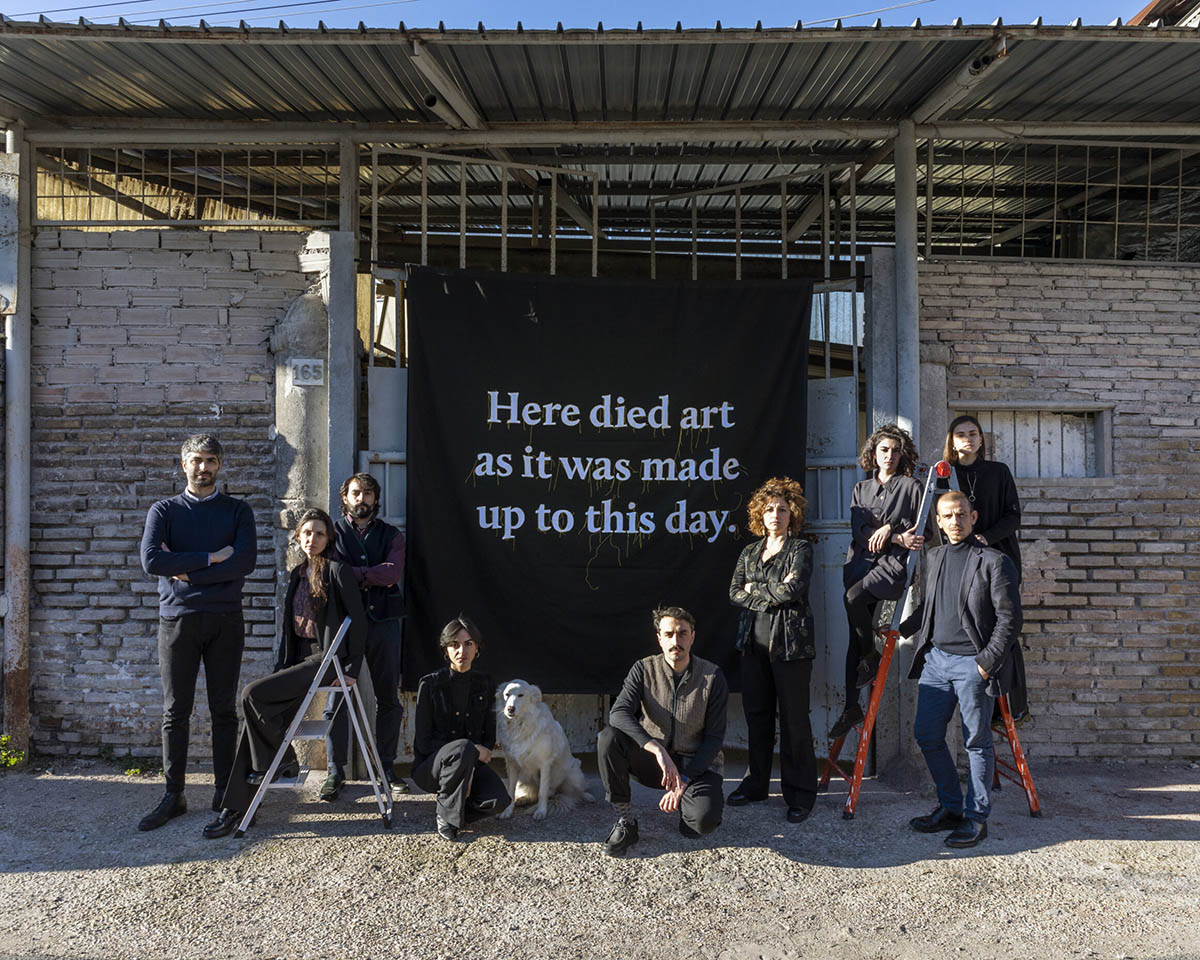
Erka Shalari: Who will be the one to give the answers?
NC: Numero Cromatico.
ESH: Even if reconstructing memories is not always easy, try to tell us a few things that have moulded during these years.
NC: Numero Cromatico was founded in 2011 with the aim of placing art theory at the centre of art research. We specifically reckoned (and still do) that it was necessary to pursue an interdisciplinary research that brought together art, neuroscience, psychology, phenomenology, literature, architecture, design, and visual communication. In our view, theory comes before art production – and this is key to our practice.
Two were the main reasons that led to the foundation of the collective: on the one hand, opening a debate around the idea that art could be investigated with scientific tools and methodologies; on the other hand, the need to promote both being and designing together, sharing a future scenario, counteracting today’s individualism. Our first achievement was Nodes, a journal on the relationship between art and neuroscience, produced and distributed up to this day.
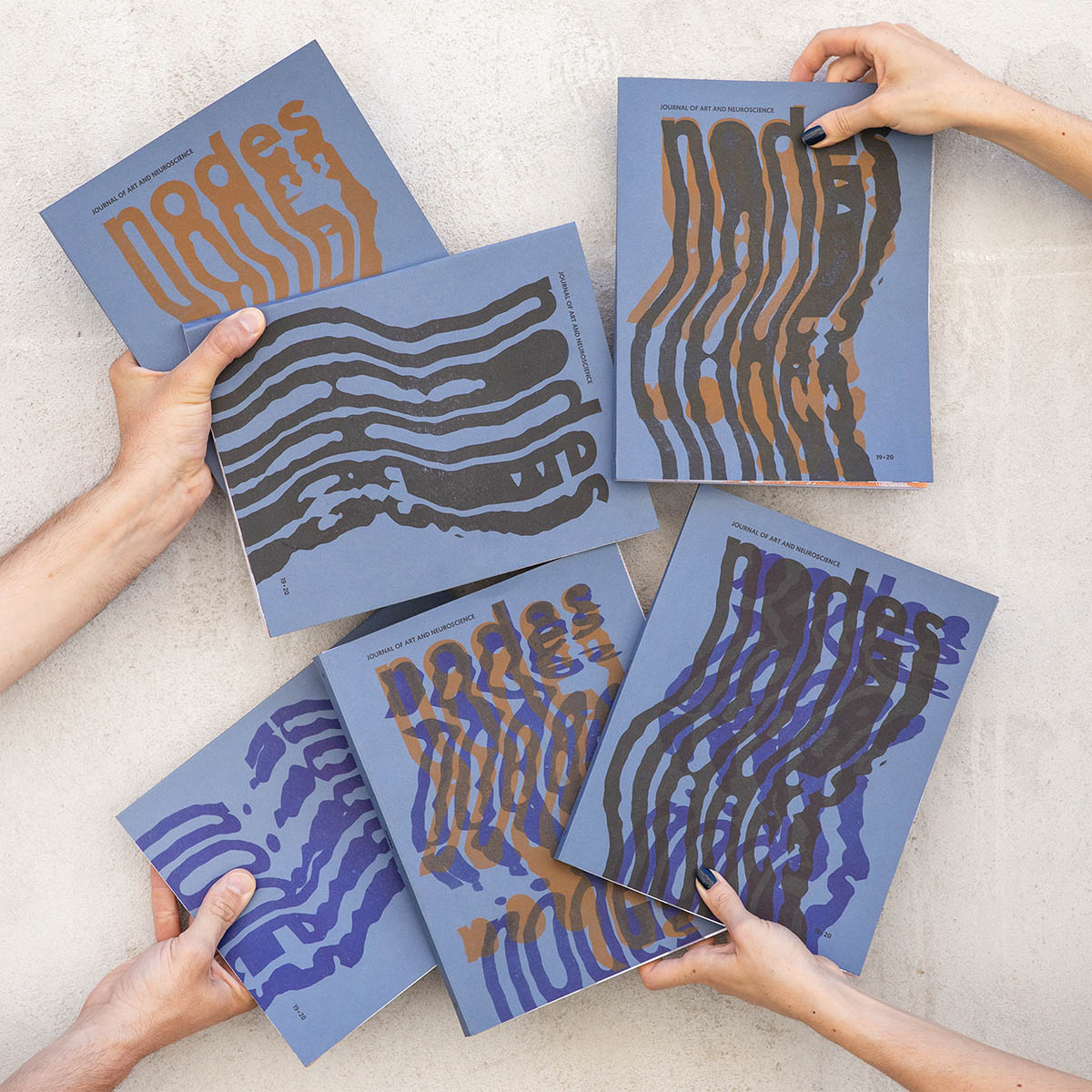
Nodes 19-20 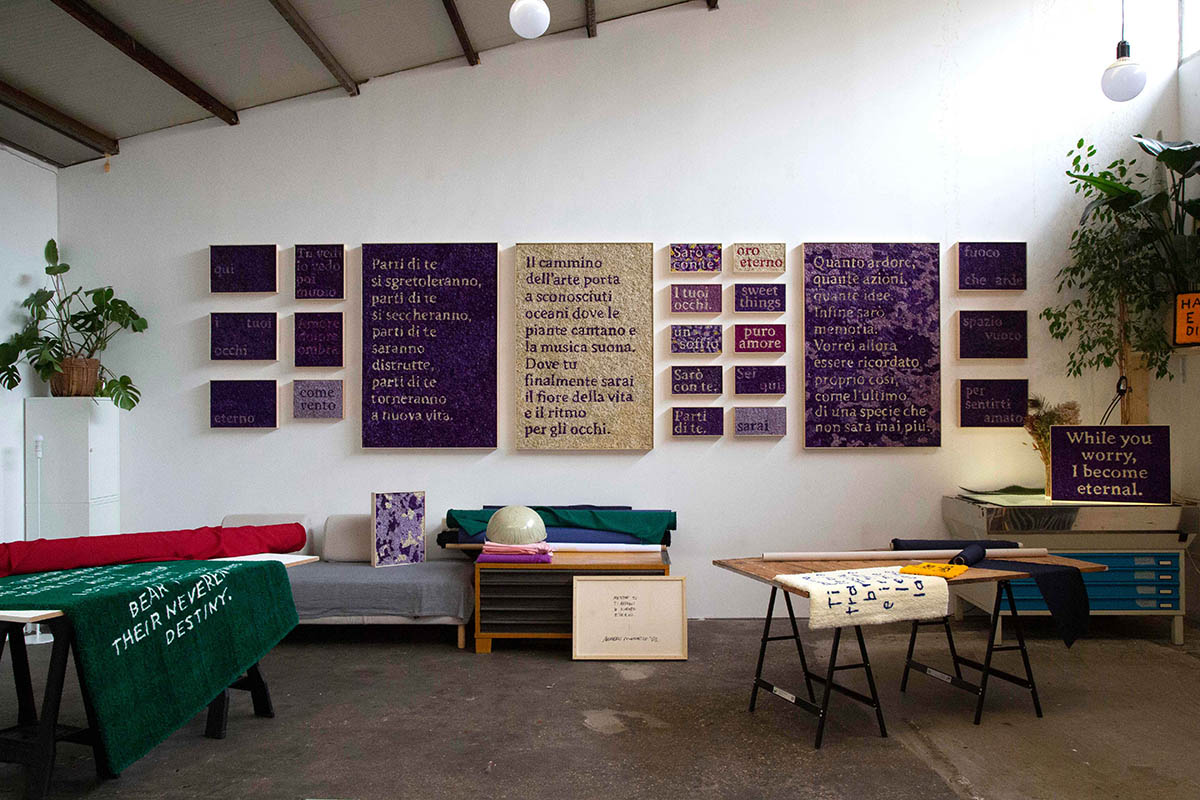
Numero Cromatico’s Studio, 2022
In the early years, we would gather at Dionigi Mattia Gagliardi’s house-studio, in Piazza Navona, Rome. Later on, in 2016, we decided to open an independent public space in which to host our activities, and, most of all, trigger a debate on our topics in the art world. This choice has, in a way, rewarded us and has been a driving force in the city of Rome. As a matter of fact, over the course of a few years during which we promoted not only our work but also that of others – including artists, curators, art historians, students (see La quadratura del cerchio, Messinscèna, Arcoscenico, Seminario, HOBIT, etc.) – as a result various art-related activities such as associations, artist-run-spaces, and shared studios arose. Many art insiders have acknowledged our role in triggering such a „cultural proliferation“. Today, we conduct our research via three main trajectories: art production, scientific research, and editorial production. Currently, there are 13 of us, with the most diverse backgrounds – drawing from art, design, and neuroscience, to mention a few. It could not be any different, and this number is bound to grow because we believe that, in this historical period, this path is necessary to imagine the direction the world will follow.
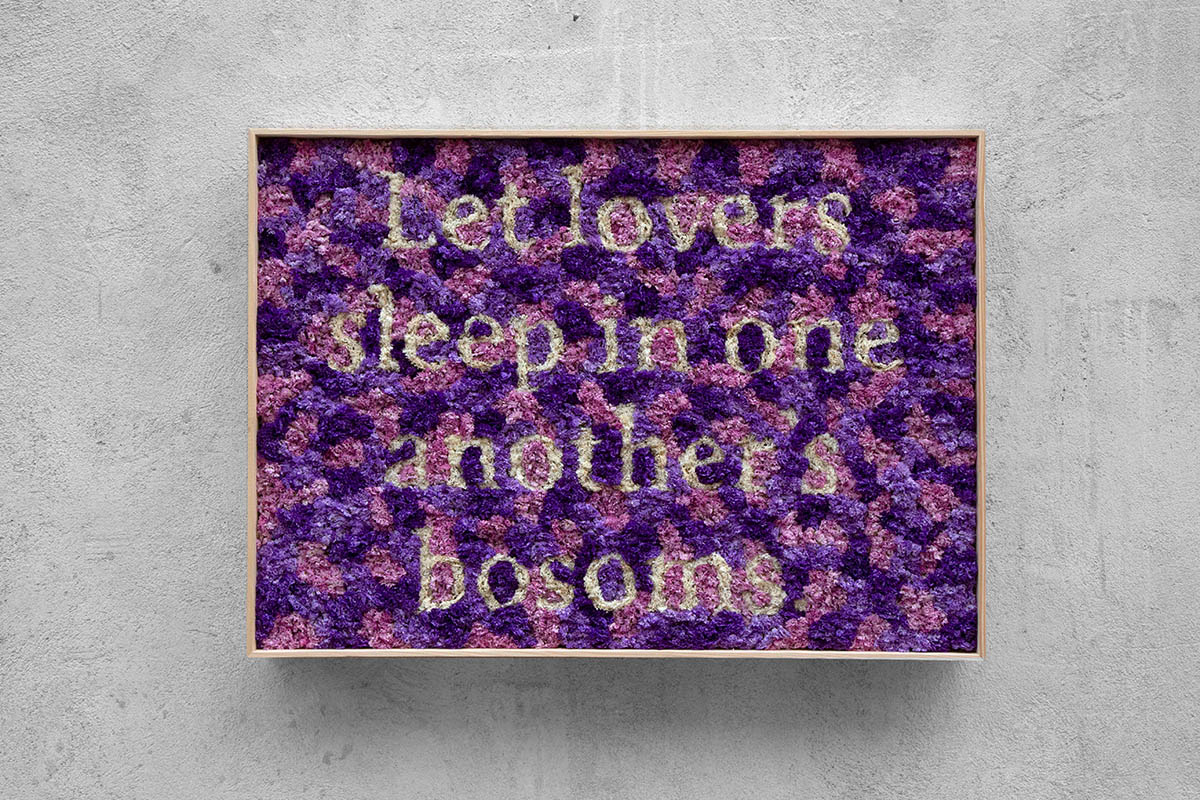
ESH: Somehow, the term „the lastest works“ in your portfolio brought me to thoughts. Why do we tend to label and highlight things with the latest, in the curriculum vitae for example or in the case of artists accenting the latest works?
NC: This division is both chronologically- and conceptually-driven. The latest works are the ones we are still working on as we reckon they are not fully completed. Up until 2019, we pursued our research both individually as well as a group (even though the artworks still originated from a shared debate). 2020 was the year that marked the abandonment of single identities, which led to the artworks being signed as Numero Cromatico.
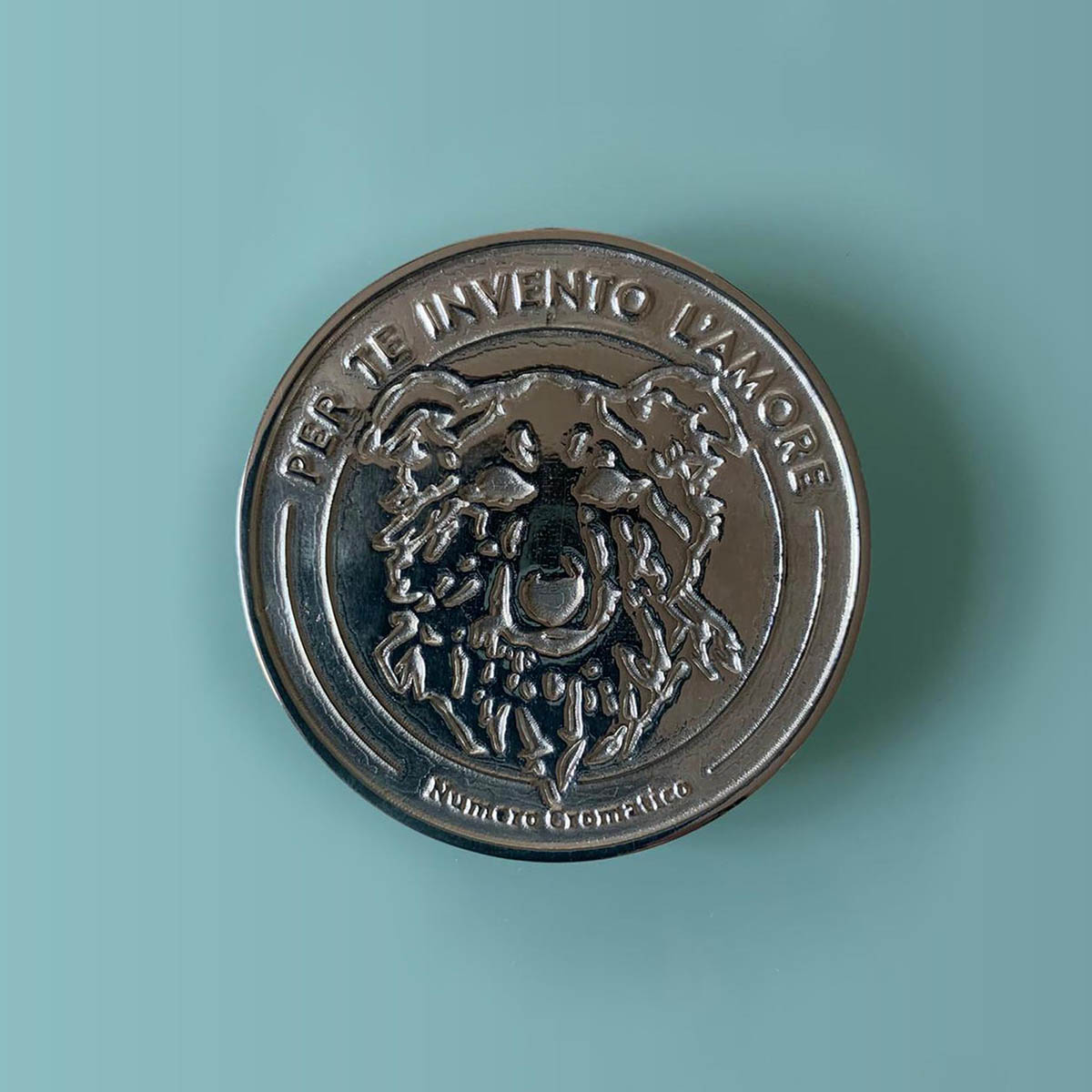
ESH: Can you tell us about your first work together?
NC: Our first artwork together is definitely Nodes – not merely a magazine but a legit collective piece, the symbol of our being together.
ESH: What materials are fascinating you recently?
NC: In recent years, we expressed an ever-growing interest in the research on materials and surfaces that could stimulate the viewer’s perception in a multimodal manner. This is due to scientific evidence demonstrating that it is possible to activate more affordances in the public through the material the artworks are produced with. So, in the last two years, we used both natural and artificial elements (i.e. real flowers, wool, plastic) to experiment with the public’s activation. For this specific reason, material experimentation went as far as including the physical space – of exhibitions and/or installations – where architecture, sound, and smells were also affected.
ESH: Many of your works comprise text, words, and phrases. How do they evolve, and what tasks do they perform?
NC: Text is one of the tools we have been using since the very beginning. We are currently working with Artificial Intelligence writing poems. We have three fine-tuned AIs: P.O.E. (Poetry Of the End) writes epitaphs and poems on the end; I.L.Y. (I Love You) writes love poems; S.O.N.H. (Statements Of a New Humanity) writes statements on the future. The generated texts are used for the most diverse purposes, ranging from artwork to editorial production. Text is a very strong stimulus, especially in a period in which we find ourselves drowning in images.
A sentence, a statement, or a short text, can activate the viewer in a very strong and profound way. Yet, these texts are not meant to provide the reader with any specific message but rather are used as tools to spark in each reader different and subjective thoughts, on the self and the world as a whole.
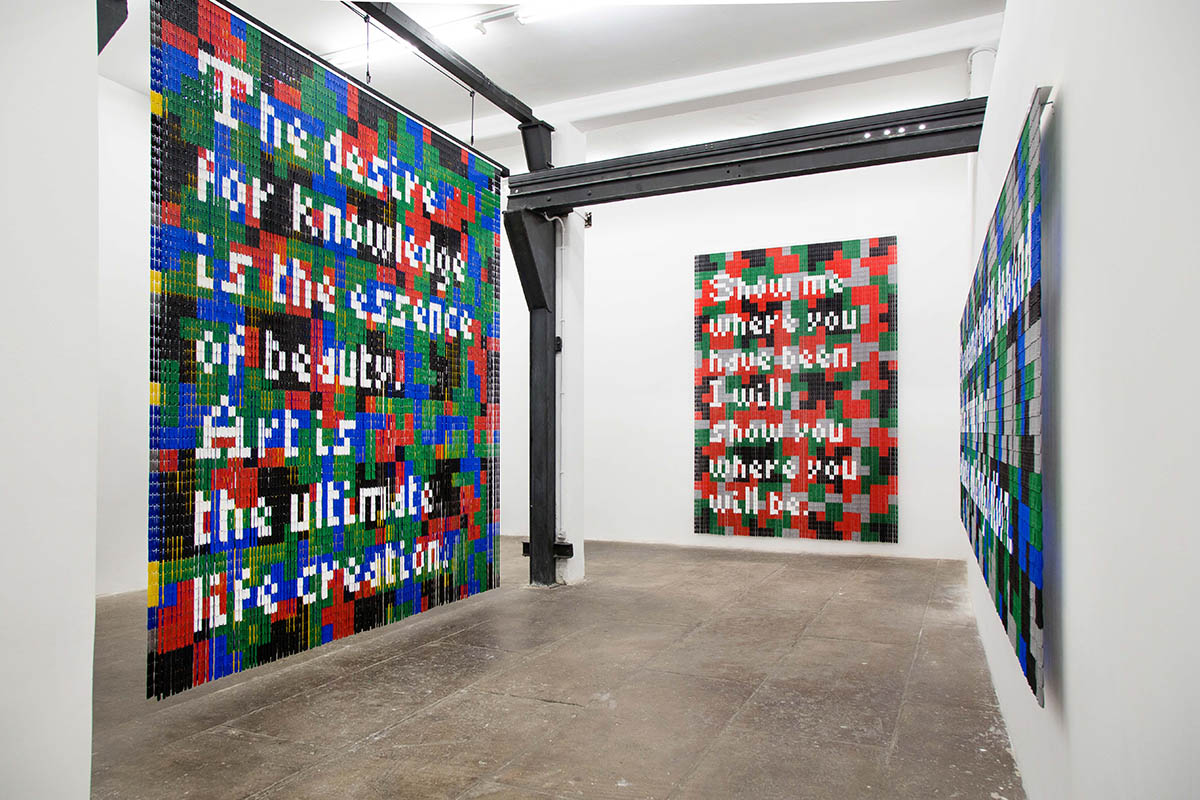
ESH: Then, what do you think of Artificial Intelligence?
NC: We consider it to be an important tool with multiple functions and potentialities at our disposal. We are not interested in AI per se but rather in its present and future use.
ESH: I always find myself caught by artists who include text in their art. I find, for example the works of Barbara Kruger, Marcello Maloberti, Richie Culver and Stefan Brüggemann exciting. I wonder what references are embodied in your work.
NC: The examples you gave are very interesting, yet they are far from the way we approach text. The artists we consider closer to our practice are Futurists, some artists of the visual poetry movement, and Eventualism, where the message delivered by the text plays a background role as opposed to the fundamental role of text as sign and image. In our latest works, the text is indeed just one of the elements of the composition and can be read as well as perceived as an abstract element.
ESH: How is it to work as a collective of artists and are there any collectives in art history that you treasure?
NC: Working in a collective is, for us, a necessity – it is simply the only possible way. Many are the groups and collectives we look up to. These also belong to a line of research that we embrace, along which we would place ourselves – such as Futurism, Arte Programmata, and Eventualism – to name only a few! The latter share our same need to produce theory as well as art.
ESH: And what about the thematics you explore?
NC: We recently published a text called Falsifiable art and absence of meaning. Numero Cromatico’s aesthetic principles and collective approach in which we present the aesthetic foundations of our research. The principles are the following: interdisciplinarity, interaction, artist expressive abstinence, minimalism, being sensorial, enriched spaces, the study of emotions, being moved, the natural/artificial relationship, absence of meaning, and scientific research. For further information, we recommend reading the full text on our website (rb.gy/jr6vot).
ESH: Part of this group is also Futura. I would like to ask for her position in the group, and perhaps also about the role of dogs in our history.
NC: Animals play a crucial role on Earth and in our relationship with other humans as well. In an increasingly human-centred world, we have lost contact with other species. Dogs, for example, have evolved to have a special relationship with humans; they have become accustomed to understanding our signals in complex ways and, if treated properly, can play a decisive role in our lives. In art history, there are many examples of artists who had a profound relationship with their dogs. Futura is always with us – at the studio but not only there – and actively participates in what we do.
For this reason, when in 2022 we won Premio Taverna and were asked to make a talisman to protect the city of Rome, we decided to depict her – Futura – accompanied by a verse written by I.L.Y.: „For you I create love“, a sort of love declaration to art as well as a way to represent the group’s collective nature.
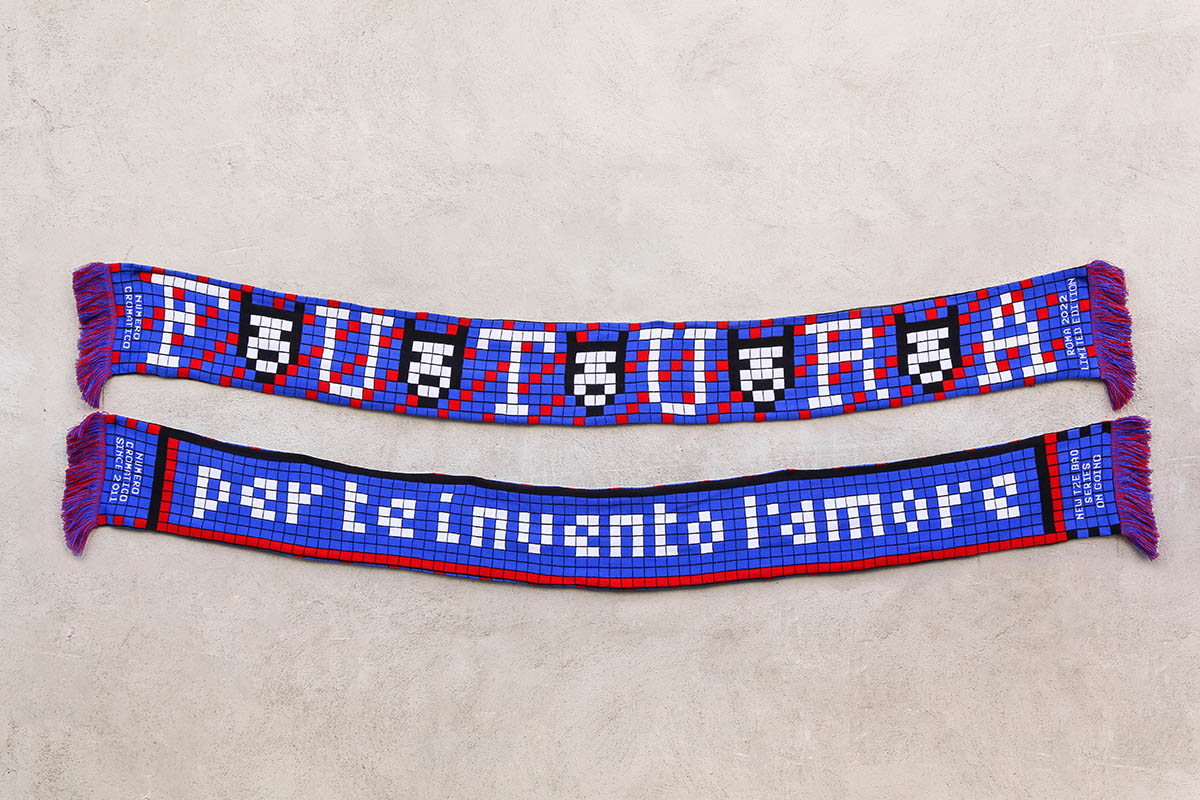
ESH: I really like the editions and merchandising pieces you have produced over the years. I wonder how often it happens to you to walk on Rome’s road and see, for example, a scarf or a bag created by Numero Cromatico?
NC: It happens more and more often, and it comes as a surprise every single time. It is amazing to see that we have such a large audience, increasing over the years.
ESH: Recently, you have had a great show at T293; I have been hearing many noteworthy testimonials about the gallery, some of which come from collectors that I have been interviewing in the past. Tell us something about this experience.
NC: T293 is a very serious gallery with an international programme and approach. Over the years, we have seen very interesting exhibitions in their spaces, such as Tutto è comune by Claire Fontaine. We have always looked at their work with great respect, and we are very pleased with what we have done together in these past few months. Currently, the gallery is showcasing our project The future will not wait for us ovvero il futuro non ci aspetta, which takes the form of an installation with large-format artworks designed specifically for the spaces. The exhibition was open until February 24, 2023.
ESH: There is also a Spotify playlist for this exhibition, containing songs such as Real Friend, Digital Love, Beyond, Windowlicker. How came the idea to make this playlist?
NC: We spend a lot of time in the studio together and often music is our background, and Spotify is our preferred shared platform. We started to create playlists so that we could choose the songs we wanted to listen to, day by day, depending on the mood, the type of studio activity, the time of year. So we often found ourselves repeatedly listening to certain songs during production periods of certain exhibitions or projects and, for the past year, each exhibition has been accompanied by a playlist: songs that characterised the mood in the studio during the production period or songs that reminded us in some way of the artworks or the feeling that that specific exhibition suggested to us.
ESH: Two sounds that depict the area where your studio is located. Cornelius Wildner, sound artist from Vienna, with whom I have been collaborating quite often in the direction of immersive interviews, will dwell then on your inputs and alter the whole into a sound portrait.
NC: We are sending you two audio recordings that we think represent us and the place in which our studio is situated. The first one is called „City traffic“, and it is a recording of the typical sound of the streets here in San Lorenzo, Rome (there’s the sound of the tram too); the second one is called „Crowing rooster“ because our studio is located at the very end of a narrow alley where there are also chickens, roosters, cats, and it really feels and sounds like we are immersed in nature. It somehow reminds us of the natural/artificial dichotomy that characterises our work and, in this case, also the place in which the studio is based.
ESH: In brief, what are your upcoming plans, and what do you wish from spring?
NC: We have two important upcoming events, both in March. The first one is the third edition of HOBIT – How Our Brain Innovates Thinking and it will start during Brain Awareness Week. It consists of a series of free online lectures featuring artists and scholars of international standing thanks to the support of Dana Foundation and FENS (Federation of European Neuroscience Societes). At the end of March, we will launch our latest publication, namely a photographic book on the exhibition project Tre Scenari sulla Percezione del Tempo – an exhibition in three acts that took place in our project space at via dei Volsci 165 (Roma) from June 19, 2021 until June 19, 2022. Finally, there are some important projects lining up but perhaps you will read about them soon.
Address and contact:
Numero Cromatico
Studio
Via Tiburtina, 213
00185 Roma (Visits by Appointment)
www.numerocromatico.com
Numero Cromatico’s artistic research is based on the scientific approach to art, with a focus on neuroaesthetics, aesthetic psychology, literature, digital humanities and visual communication. Members of the collective are researchers with a background in both visual arts and neuroscience. The artistic practice has evolved into different directions, including painting, environmental installation, artificial intelligence, as well as editorial and curatorial projects, workshops and events. Numero Cromatico is also editor of Nodes, the only Italian bilingual publication on neuroaesthetics – now a reference point for artists and researchers worldwide. The group is based in Rome, where in 2016 they opened an experimental space so they could share with the public their artistic and scientific research.
In 2019 Numero Cromatico carried out the first experiment in neuroaesthetics at the Italian art fair ArtVerona and won the award for best independent entity. In the same year, the group was awarded with a special mention for the Premio Creature. In 2020 the collective won the Exhibit Program by DGCC MiBACT and the Artribune award for best hybrid space in Italy. In 2021 the group was shortlisted for the Brain Awareness Week, promoted by FENS and Dana Foundation, and won: Re:Humanism Art Prize; Abitante – promoted by Virgilio Sieni CNPD; Sala Santa Rita Contemporanea promoted by Palazzo delle Esposizioni; the 10th edition of Italian Council promoted by the Directorate General for Contemporary Creativity of the Italian Ministry of Culture. In 2022 the group was shortlisted again for the Brain Awareness Week promoted by FENS and Dana Foundation and is selected by Artribune as one of the 10 best booths of Arte Fiera Bologna. In the same year, they won Premio Taverna by Spazio Taverna and were nominated as Best emerging artist of the year by Exibart.
Cornelius Wildner is a Vienna-based sound artist and music technologist. He deals with ephemeral sounds, field recordings, archiving, live performance, analogue and digital synthesis. At the same time, he collaborates with artists from different genres https://linktr.ee/wildner
Erka Shalari is a Vienna-based art author & curator. She studied Occupational Psychology at Tirana State University, Culture Management at MDW, Institute for Culture Management, Vienna and Curatorial Studies at Node Center Berlin. She focuses on discovering unique artistic positions, unconventional exhibition spaces, and galleries that have deliberately broken new ground in their working methods. Editor at Les Nouveaux Riches Magazine since 2020 https://linktr.ee/erkashalari





